Pacific Ninebark The Rose Family–Rosaceae
(Pursh) Kuntze
(Fy-zoe-KAR-pus kap-ih-TAY-tuss)
 Names: Physo means bladder, carpus means fruit, referring to the inflated fruits. Capitatus means having a head, referring to its dense flower or fruit cluster. Ninebarks are so called because it was believed there are nine layers (or nine strips) of peeling bark on the stems. In the past it has been lumped in with P. opulifolia, Common Ninebark (an eastern species); along with this species, it was also known as Opulaster capitatus and Neillia opulifolia, Opulaster and opulifolia mean rich in flowers (asters) or in leaves (folia)–they may also refer to its similarity to Viburnum opulus. Because of its close association to spiraeas, it has also been known as Spiraea capitata. Western Ninebark is another common name.
Names: Physo means bladder, carpus means fruit, referring to the inflated fruits. Capitatus means having a head, referring to its dense flower or fruit cluster. Ninebarks are so called because it was believed there are nine layers (or nine strips) of peeling bark on the stems. In the past it has been lumped in with P. opulifolia, Common Ninebark (an eastern species); along with this species, it was also known as Opulaster capitatus and Neillia opulifolia, Opulaster and opulifolia mean rich in flowers (asters) or in leaves (folia)–they may also refer to its similarity to Viburnum opulus. Because of its close association to spiraeas, it has also been known as Spiraea capitata. Western Ninebark is another common name.
Relationships: There are about 8-10 species of Physocarpus, with all but one (which is native to northeastern Asia), are native to North America.
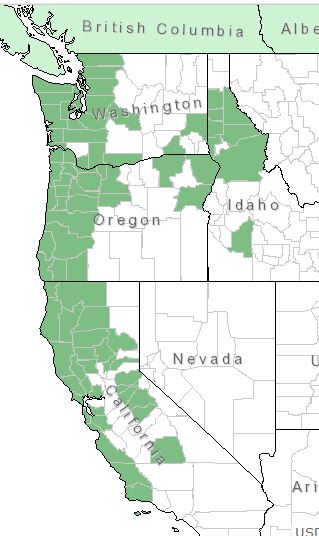
Distribution of Pacific Ninebark from USDA Plants Database
Distribution: Pacific Ninebark is native from Southeast Alaska to the coast ranges of Santa Barbara County in California, mostly in the coastal states and British Columbia. Its frequency decreases with increasing elevation and eastward progression, with a few found in Alberta and Idaho.
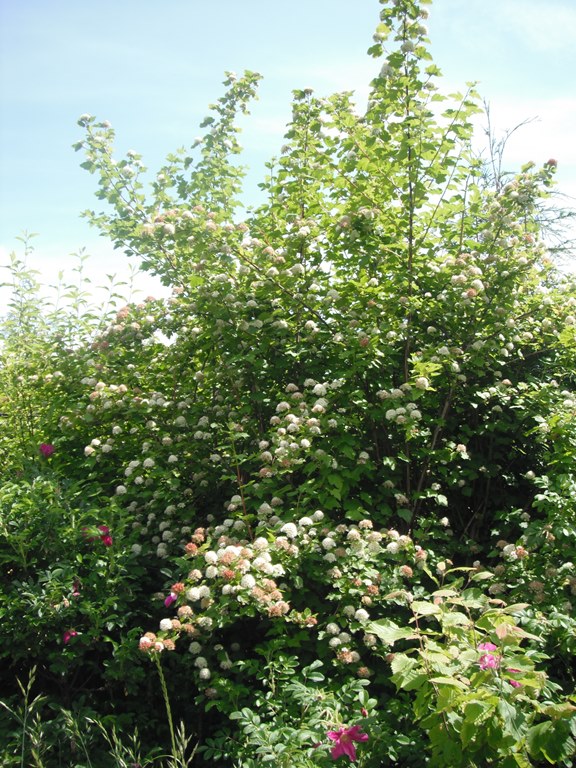
Growth: Pacific Ninebark grows to about 12 feet (4m), sometimes reaching 18 feet (6m) in the wild. It is moderately short-lived.
Habitat: it is found along streams, in wet meadows, coastal marshes and at the edges of moist woods. Wetland designation: FACW-, It usually occurs in wetlands, but is occasionally found in non-wetlands.
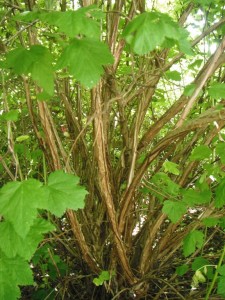
The peeling brown bark on its stems.
Diagnostic Characters: Pacific Ninebark is most easily recognized by the brown shredding bark on its branches. Its toothed leaves are 3-5 lobed, similar to a maple leaf. At a glance it can easily be confused with salmonberry which has toothed leaves with 3 leaflets. Its flowers are small and white with yellow centers and pink stamens, tightly packed in a hemispherical cluster. Its fruits are small, reddish, inflated follicles (dry one-celled seed capsules or pods, which split open one side).
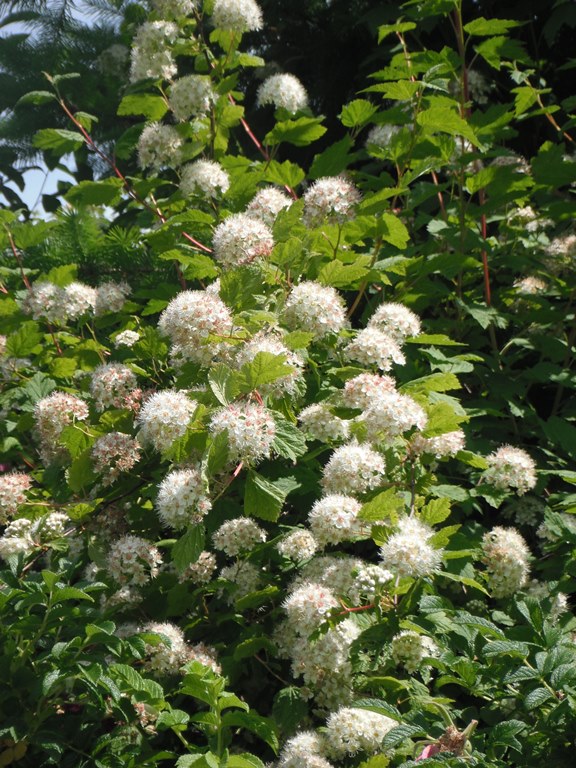
In the Landscape: Pacific Ninebark is a valuable shrub in a wild garden but could also be used at the back of a shrub bed in a more traditional landscape. Its attractive buds, white flower clusters and reddish fruit extend its beauty through much of the summer and into fall. Its eastern cousin, P. opulifolia, has several cultivated varieties with purple or yellowish leaves.
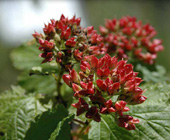
Cluster of red seed capsules.
Phenology: Bloom time: April-June. Fruit ripens: September-October.
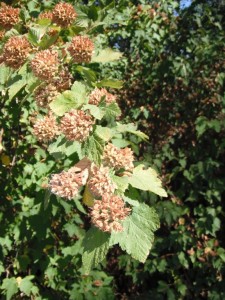 Propagation: Pacific Ninebark is easy to start from cuttings, or live stakes (direct planting of a cutting into its desired location). Seed propagation is possible, but much slower. Fall is the best time to sow the seeds, although many sources state that it does not require a stratification period.
Propagation: Pacific Ninebark is easy to start from cuttings, or live stakes (direct planting of a cutting into its desired location). Seed propagation is possible, but much slower. Fall is the best time to sow the seeds, although many sources state that it does not require a stratification period.
Use by people: The wood of Pacific Ninebark has been used to make small items such as children’s bows and knitting needles. A tea made from the bark was used as a laxative or to induce vomiting. Due to toxicity concerns, caution is advised for any internal use.
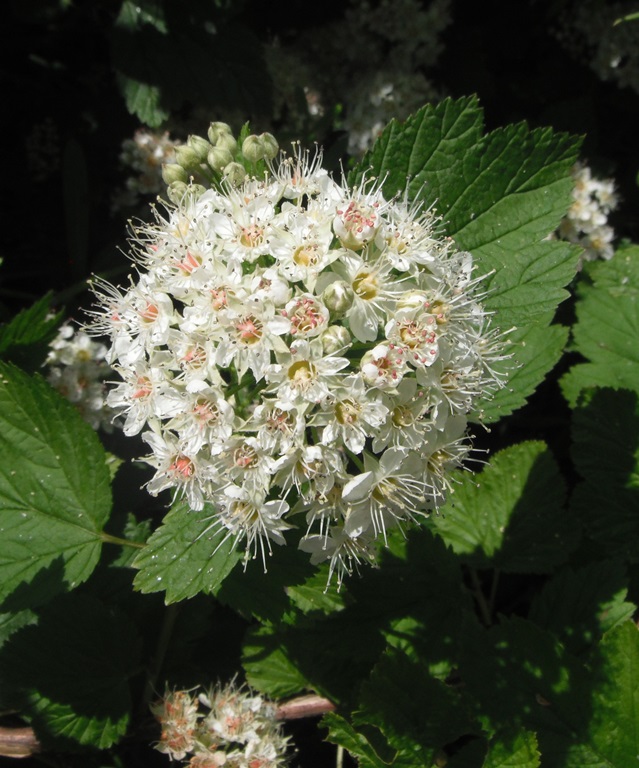
Use by wildlife: Mountain Goats have been observed eating Pacific Ninebark. Its flowers are mostly pollinated by native bees but may also be visited by butterflies. Tall arching branches and foliage provides cover.
Links:
Consortium of Pacific Northwest Herbaria
WTU Herbarium Image Collection, Plants of Washington, Burke Museum
E-Flora BC, Electronic Atlas of the Flora of British Columbia
Jepson Eflora, University of California
Ladybird Johnson Wildflower Center
Native Plants Network, Propagation Protocol Database
Native American Ethnobotany, University of Michigan, Dearborn

